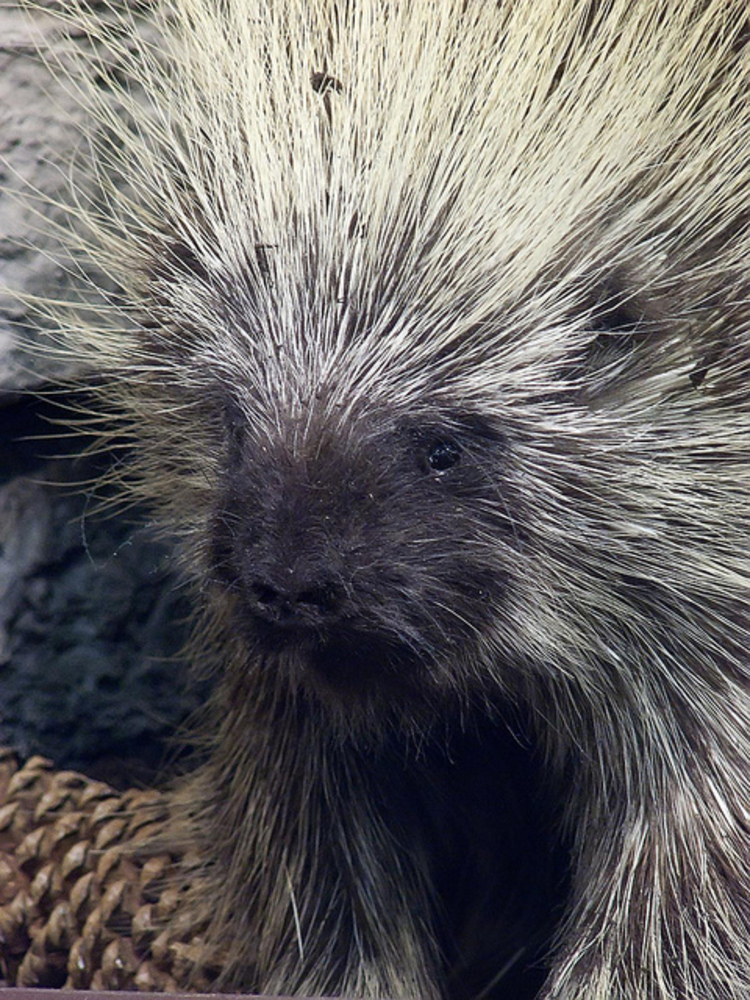Porcupine quills penetrate skin better than a hypodermic needle because of tiny backwards-facing barbs at their tips, which also render the quills very difficult to pull back out. This trick could now inspire better medical equipment such as needles and tissue adhesives.
 North American Porcupines carry around 30,000 spines and are known to be an effective defence mechanism - they penetrate tissues easily and are often difficult to remove. Unlike those found on similar animals such as the African porcupine or our own hedgehog, North American Porcupine quills have a series of microscopic barbs on their tips. These barbs intrigued researchers, including Dr Jeffrey Karp from the Brigham and Women's Hospital in Boston, who then undertook a series of experiments to see what effect these barbs had.
North American Porcupines carry around 30,000 spines and are known to be an effective defence mechanism - they penetrate tissues easily and are often difficult to remove. Unlike those found on similar animals such as the African porcupine or our own hedgehog, North American Porcupine quills have a series of microscopic barbs on their tips. These barbs intrigued researchers, including Dr Jeffrey Karp from the Brigham and Women's Hospital in Boston, who then undertook a series of experiments to see what effect these barbs had.
Publishing their results in the journal PNAS, the researchers describe a number of experiments, measuring the force required to penetrate a sample of pig skin, and then to pull the quill back out. They repeated their tests with quills where the barbs had been sanded smooth, and with other items of a similar diameter, including a hypodermic needle.
Unsurprisingly, having backwards-facing barbs means more effort is needed to remove a porcupine quill than a smooth quill - almost four times as much force was required as with a barbless quill.
The surprising result, and for the researchers the most interesting, was that the presence of barbs reduced the force needed to penetrate into the muscle. While an 18 gauge hypodermic needle takes around 0.59 Newtons of force to pierce into pig flesh (bought from a local butcher), the barbed quill required only 0.33N to achieve the same task. Samples taken from the skin and observed under a microscope also showed a much smoother puncture site, suggesting that the tissue had absorbed less energy from the quill, and therefore taken less damage.
Computer modelling suggests that the barbs concentrate force onto a smaller area, much like the jagged edge of a serrated knife. This reduces the need for the tissue to deform around the entire circumference of the quill, resulting in easier penetration and less damage.
The authors argue that mimicking the barbed structure could allow creation of microneedles that penetrate easily but resist buckling, and enhance a range of other biomedical applications.









Comments
Add a comment